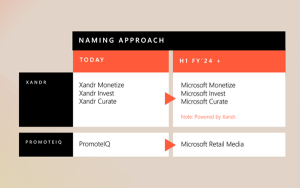The business world is moving faster than ever. And while technology solutions are available that can help companies keep pace, many still find themselves scrambling to keep up. This makes efficiency more important than ever.
While generally more operationally streamlined, small-medium businesses (SMBs) often lack the resources to invest in blanket technological upgrades. However, this economic reality does not mean SMBs can’t achieve organizational and technological efficiency—they just have to invest strategically.
vCita recently surveyed nearly 200 North American entrepreneurs, marketers, small business owners and technology decision makers across a variety of industries. Our aim was to assemble a snapshot of the respondent’s attitudes towards web engagement tools and understand their use in daily activities. We found SMBs are looking to technology to improve internal task automation and communication with clients and prospects. Unfortunately, we also found that these same SMBs are failing to leverage the mobile capabilities these web engagement tools offer.
Task Automation: The Key to Working Smart
Small business owners have no trouble finding ways to keep busy, as their to-do lists are seemingly never-ending. But, what’s the ROI on the tasks they choose to self-perform? Are they spending their time on activities that bring new business or are they focusing on administrative tasks that fail to generate revenue?
Survey results indicated that companies not using available online engagement technology were twice as likely to spend 16+ hours per week on administrative, backend tasks. Non-adopters also indicated they automate appointments and follow-up emails with current and prospective customers at lower rates – 50% and 75% respectively – than small businesses taking advantage of the engagement tools available to them.
Not automating these tasks can be detrimental to small businesses. Unfortunately there is a disconnect between necessity and action as half of the respondents eschewing client engagement technology were less likely to manually manage tasks such as reminders, email, appointment booking, and billing/payments. However the same respondents listed scheduling confirmations/reminders, follow-up emails, and appointment booking as the top three tasks they would automate if given the opportunity.
These findings are telling, as they highlight just how impactful the ability to automate tasks or lack thereof, can be for a small business.
Don’t Fight It: Offering Consumers the Path of Least Resistance
Proper time/resource allocation is important, but ultimately useless without clientele. To that end, SMBs need to understand their customers and engage on their terms. Consumer-driven preferences have driven a need for increased online interactions.
This shift is already occurring, as 67% of surveyed SMBs leveraging online engagement tools reported increased client acquisition directly through their website – compared to only 34% of their counterparts who were not integrating these tools. Making these strategic improvements also translated to 75% indicating primarily interacting with new clients via email, while respondents without were 50% less likely to have any customers contact them through their website.
The data shows SMBs choosing to up-level their client engagement are realizing tangible improvements in communication efficiency and customer acquisition. While those opting out are still relying on obsolete and inefficient channels to interact with clients or worse yet, losing out on that business to competitors offering more client-focused options.
A Mobile Business is an Agile Business
With nearly 6 billion devices worldwide, mobile is a preferred channel. Thus, it is no longer possible to optimize your online engagement strategy without incorporating a proficient mobile strategy.
In addition to the obvious customer accessibility benefits, mobile can streamline many operational functions and provide cost cutting opportunities. Yet, our results indicated that less than half (45%) of respondents are leveraging their mobile devices to manage daily client interactions and related day-to-day backend tasks. Those who are using mobile are managing less than 10% of their daily activities.
The efficiency and engagement potential by fully utilizing the capabilities mobile technology is enormous. The competitive edge this channel can offer SMBs is too great to ignore, and those who fail to adjust risk finding themselves unable to contend with competitors with more extensive technology capabilities.
What Does It All Mean?
In part, we could attribute the survey results to perception. SMBs employing some measure of online engagement were nearly 20% more likely to believe the volume of business acquired online needed improvement. Speculating on the why misses the point. The volume of business done online is only going to grow, and someone is going to absorb that extra market share; the only question is who’s it going to be? Projections aside – the results small businesses are seeing right now from investing in online engagement are tangible. So as the digital conversion persists, small businesses can expect to find themselves at an increasing disadvantage the longer they delay realigning their perceptions.
(186)






